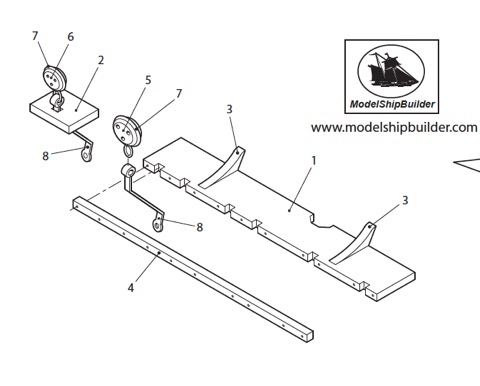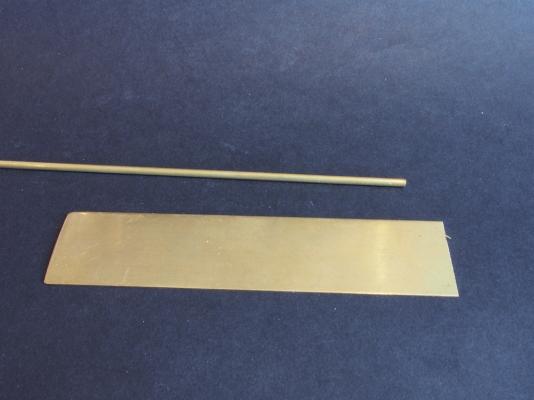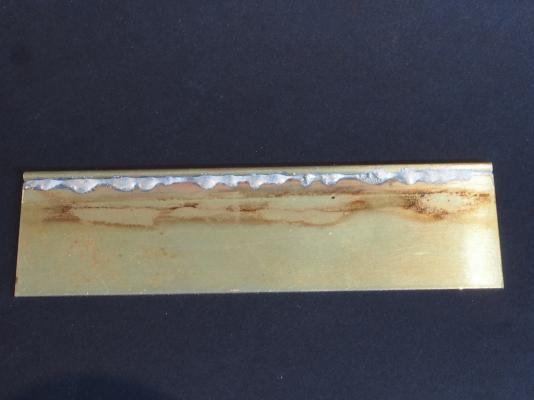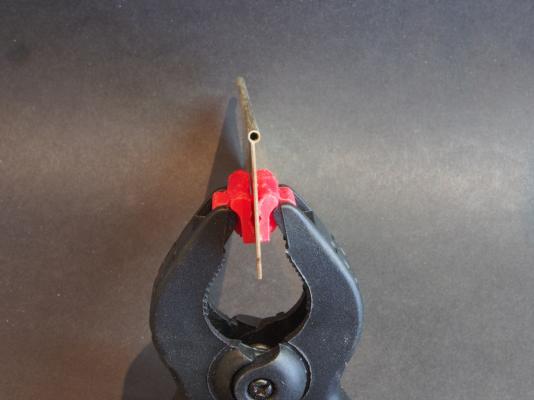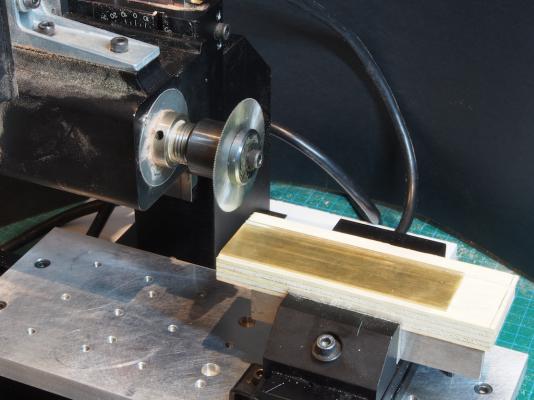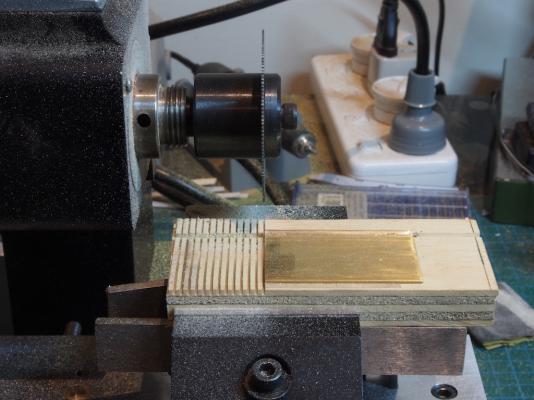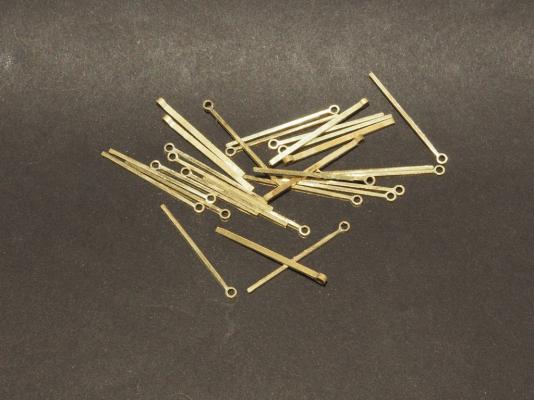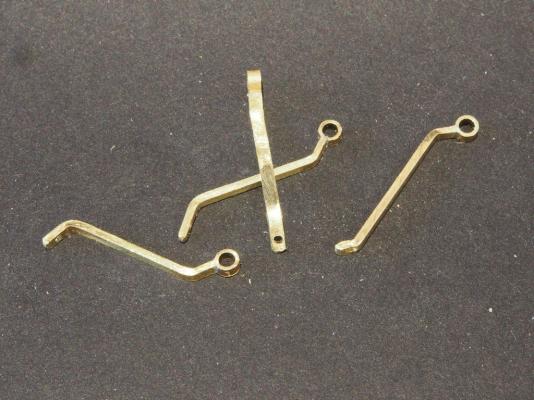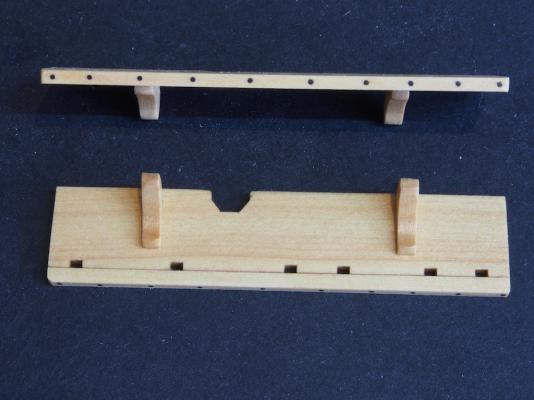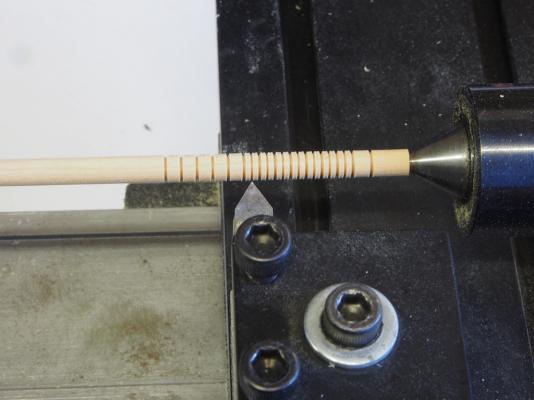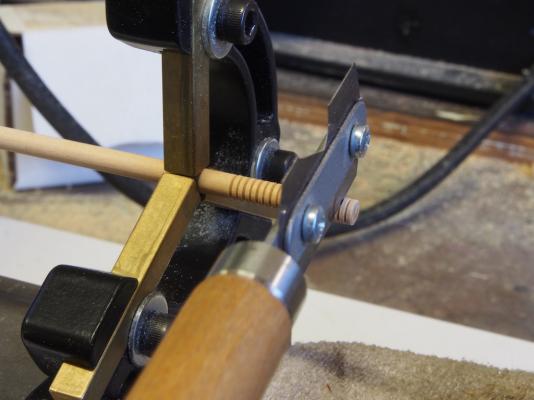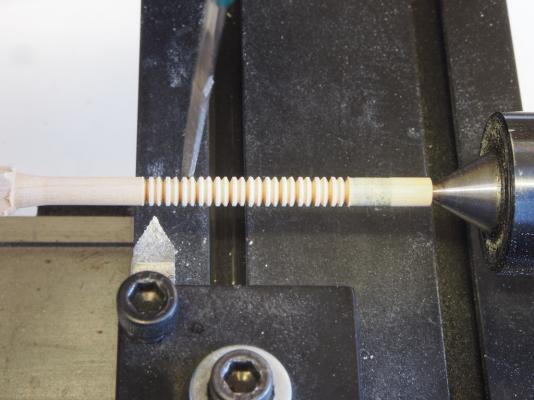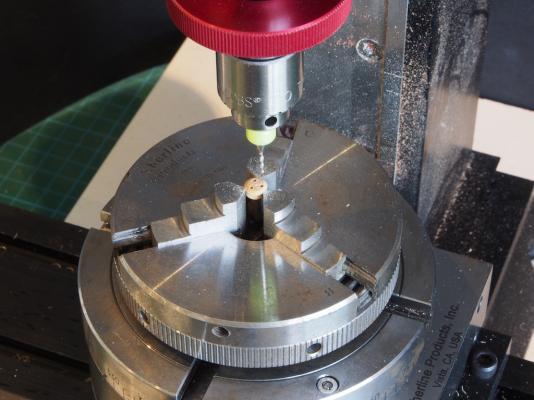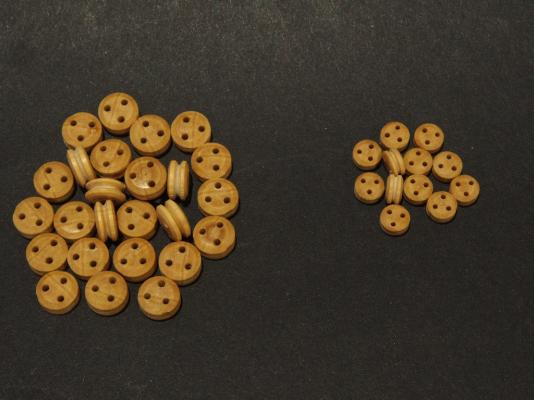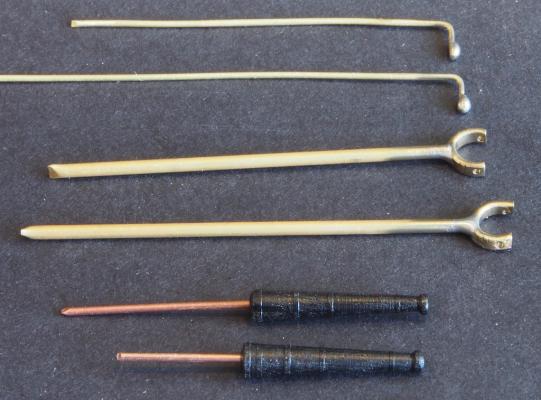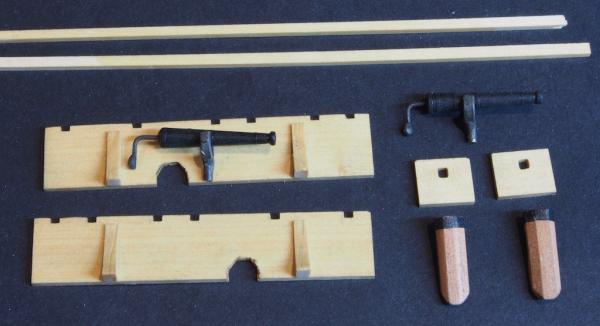-
Posts
4,888 -
Joined
-
Last visited
Content Type
Profiles
Forums
Gallery
Events
Everything posted by gjdale
-
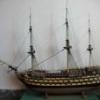
How would you improve your Byrnes tools?
gjdale replied to Keith_W's topic in Modeling tools and Workshop Equipment
Boyd, Jeff Hayes (HobbyMill) has a page on his website about operating the Byrnes Saw, and it includes advice on Blade selection. I just checked, and the page is still there - don't know how much longer he'll keep it up now that he's "retired". Here's the link to the Saw blade selection part: http://www.hobbymillusa.com/byrnes-saw-operation-2.php -
Looks like a fascinating subject and a little unusual. Think I'll tag along too.
- 641 replies
-
- greenwich hospital
- barge
-
(and 1 more)
Tagged with:
-

Cutter Cheerful 1806 by rafine - FINISHED
gjdale replied to rafine's topic in - Build logs for subjects built 1801 - 1850
Mighty fine work Bob - looking great!- 525 replies
-
- cheerful
- Syren Ship Model Company
-
(and 1 more)
Tagged with:
-
I'll add my thanks and appreciation for your detailed explanations and photo essays Ed. The techniques you have so skilfully demonstrated and explained, are applicable to a wide range of models and are an absolute treasure. Thank you for taking so much time and effort to post in such detail for the benefit of all.
- 191 replies
-
- young america
- clipper
-
(and 1 more)
Tagged with:
-
I always enjoy watching your builds Rusty, so I'll pull up a chair for this one too.
- 310 replies
-
- cheerful
- Syren Ship Model Company
-
(and 1 more)
Tagged with:
-

HMS Naiad 1797 by albert - FINISHED - 1/48
gjdale replied to albert's topic in - Build logs for subjects built 1751 - 1800
Gosh that's nice work Albert! -
Congratulations Bob - a truly fine model and excellent craftsmanship.
- 196 replies
-
- higaki kaisen
- woody joe
-
(and 1 more)
Tagged with:
-
Thanks Dan, Coming from a professional model builder, your kind words are especially appreciated. Thanks also for posting pics from your QAR - that method might well be the "winner"! I'll have a closer look today
- 456 replies
-
- finished
- bomb ketch
-
(and 2 more)
Tagged with:
-
Thanks Jack, I had a look at your log last night, after Ken sent the link through. Nice work, by the way!
- 456 replies
-
- finished
- bomb ketch
-
(and 2 more)
Tagged with:
-
Thanks for the link and the suggestion Ken. I've got a couple of ideas floating through my head at the moment, including the reasons WHY my joints failed. I'll add this to the list of possible solutions though.
- 456 replies
-
- finished
- bomb ketch
-
(and 2 more)
Tagged with:
-
And now to the not so successful story... Chainplates I had a brainwave about making the chain plates, and was absolutely convinced this was going to work! The drawing below shows the chainplate (#8) as having a tubular-like section at the top, through which the strop for the deadeye passes. Having thought about this for a few days, I devised a cunning plan. I took a sheet of 1/32” thick brass flat bar, and a piece of 3/32” OD brass tubing, and silver soldered them together. I even devised a way to support the flat bar so that it remained level with the centre of the tubing. Here is what it looked like after soldering – not pretty. Not to worry, a bit of a clean up with a file and some sand paper, and it’s looking much better: And just to prove that I managed to get it centred properly: The next problem to solve was how to slice off pieces of the correct thickness to fit into the milled slots in the Channel boards. I first had to decide how to hold and cut the work. No problem – rotate the mill head 90-degrees and attach a slitting saw. Make up a sacrificial holding board for the brass stock, with a small channel cut into it to seat the tubing while keeping the flat-bar flat. Mount said piece in mill vise and we’re ready to cut – almost…. The slots in the Channel boards were milled with a 1/16” mill, so that was the maximum width for each slice. My mill handwheels are calibrated in millimetres (1/16” = 1.59 mm) and I planned to use a slitting saw that has a kerf of 0.6 mm. I decided that if I went for a slice thickness of 1.4 mm, I would allow myself a tiny bit of wiggle room, while at the same time making the Mill work easier as I would need to advance the X-axis handwheel exactly 2 mm (ie 2 complete rotations) for each slice. I then simply set the depth of cut to 2.5mm (just over the 3/32” thickness of the tubing), and advanced the Y-axis into the saw – carefully, and slowly. This part of the operation worked like a charm. You can see in the following shot, how the process looks part way through. And here are the resulting pieces – a test fit showed they fit into the Channel slots perfectly. A 0.8mm hole was drilled in the end of each piece to take a securing nail, and the chainplates were then carefully bent to the approximate shape shown in the drawings. At this stage I was feeling pretty darned pleased with myself! My success, however, was short lived and it was at this point that success finished and catastrophic failure took over! I made up some deadeye strops from 0.75mm brass wire. This had to be inserted through the tube part of the chainplate before being soldered closed. The parts were then all cleaned with a wire wheel in a rotary tool, and chemically blackened (using Jax Pewter Black, as it also blackens solder). It was then time to insert the deadeyes and squeeze the strops tight around them and the top of the tube. Two things happened here – both failures of the soldering process. Either the tube parted company with the rest of the chainplate, or the strop soldering point gave way, or both. Either way, I had a greater than 75% failure rate, and the remaining 25% were looking a bit dodgy too. Several days’ work down the tube, but learning (of sorts) has taken place! Back to the drawing board……
- 456 replies
-
- finished
- bomb ketch
-
(and 2 more)
Tagged with:
-
Thanks again for the kind comments and all the "likes". And welcome to the log Don - you'll find cold refreshments at the bar with Mark, and Sjors is around somewhere wit the popcorn. Some success and some spectacular failure this week! I'll spread this over two posts. Channels and Deadeyes First up, I decided that I wasn’t very happy with the cut-out in the Channels for the Swivel Gun pedestals - so I remade them, taking greater care with the cut-outs this time around. I also made up the Retaining Paunches. The drawings show these held in place with pins, so I drilled a series of 0.5mm holes and inserted copper pins into these, blackening in-situ with Liver of Sulphur on completion. Next up, a gratifying success story – the deadeyes. Two sizes of deadeyes are required – 6mm and 4.5mm diameter respectively. After turning down some 1/4" square Castello Boxwood to the appropriate outer diameter, I used a 60-degree Carbide-tip threading bit to delineate between individual deadeyes. By cutting only to about 1/4 of the diameter deep, this enabled me to cut a chamfer on both faces of each deadeye. Once all the individual deadeyes were marked out, I went back and, with the same bit, cut a small stropping groove. This groove was then widened slightly with a hand file while still on the lathe. This picture shows the initial cutting in progress. All individual deadeyes have been marked out, and the stropping grooves are now being cut. The work was supported during this process by a live centre at the tailstock end. When it came to parting off the individual deadeyes, the live centre was removed and a Steady Rest was placed close to the unsupported end of the stock. A razor saw was then used to complete the parting off process. I again decided I wasn’t happy with the first batch of deadeye blanks as neither the chamfer, nor the stropping groove were deep enough. So I re-did them. Here is a shot of the second attempt in progress. To drill the holes in the deadeyes, they were mounted one at a time in a three-jaw self-centring chuck, which itself was mounted on the Rotary Table on the Mill. The sensitive drilling attachment was used to drill a 1 mm hole in the larger (6mm) deadeyes, while a 0.7 mm hole was drilled in the smaller (4.5mm) deadeyes. The Rotary Table made short work of this task. After centring the drill bit over the lathe, it was then offset in the X-axis by one-quarter of the diameter (ie half-way between the centre and the outside of the deadeye). The first hole was drilled and the Rotary Table was turned 120-degrees for the second hole, and again for the third hole. It sounds long and tedious, but this turned out to be a lot quicker than one might at first imagine. Here is the Mill set-up: And here are the resulting deadeyes after a coat of Wipe-on Poly had been applied: Continued next post....
- 456 replies
-
- finished
- bomb ketch
-
(and 2 more)
Tagged with:
-

Cutter Cheerful 1806 by rafine - FINISHED
gjdale replied to rafine's topic in - Build logs for subjects built 1801 - 1850
Great work Bob!- 525 replies
-
- cheerful
- Syren Ship Model Company
-
(and 1 more)
Tagged with:
-
Very nice start Jack. I look forward to seeing the new building board.
- 170 replies
-
- gokstad
- dusek ship kits
-
(and 1 more)
Tagged with:
-
Ed, I too learn many valuable tips and techniques from your explanations of your machining methods and set-ups. They make perfect sense when you explain them, but nevertheless fit firmly in the category of, "ahhhh!, Now why couldn't I think of doing something that way?" Thank you for sharing your knowledge, skills and techniques so freely.
- 3,618 replies
-
- young america
- clipper
-
(and 1 more)
Tagged with:
-
Looks like you've been giving this a lot of thought Jack. Think I'll follow along to see your solutions to all of the problems you've identified.
- 170 replies
-
- gokstad
- dusek ship kits
-
(and 1 more)
Tagged with:
-
Wow John! That's a very impressive display. I love the extra details with the whale and whale boat, as well as the background and display board itself. Well done my friend!
- 2,250 replies
-
- model shipways
- Charles W Morgan
-
(and 1 more)
Tagged with:
-

Echo by Maury S - FINISHED - Cross-Section
gjdale replied to Maury S's topic in - Build logs for subjects built 1751 - 1800
Very nicely done Maury.- 324 replies
-
And then you can add the currency exchange rate as well. When I bought my Byrnes tools a couple of years ago, the Australian dollar was at parity or slightly better against the Greenback - in fact it was about US $1.05. I knew that situation wouldn't last so I went ahead and bought a LOT of stuff from O/S at the time (including my Sherline stuff as well). I'm so glad I did as the Australian dollar is now trading at around US $0.70 - that actually represents a further 50% to the price for us, including on the already exorbitant postage rates!!! The worst part is, I can't see any change in the exchange rate coming in the near future - at least not in a favourable direction for us. Okay, rant over. I'll get my coat and leave now.....
-
Thanks again for all the kind words and "likes". Some more progress to report.... Swivel Guns and Channels The Swivel Guns were made from 1/4” square Ebony stock, turned on the lathe and once again using the compound slide to achieve the taper. The only difficulty encountered was due to the very small size (19mm long and 3.8mm in diameter at the widest point, narrowing to 2mm at the narrowest). I copied the plan into my CAD program and painstakingly took off measurements for all the re-inforce rings............and then cut them by eye! The mounting yoke is a “U-shape” atop a central pedestal. To manufacture these, I hammered flat some 1.5mm diameter brass wire and then formed it around a 5/32” (4mm) brass rod. It was then transferred to a wooden dowel of the same diameter, squeezed tight, and then a 0.8mm hole was drilled right through the brass and dowel to take the subsequent “axle” pin for the guns. The piece was then removed from the dowel, the ends trimmed as close as possible to the cross-holes, and a 1.5mm diameter brass rod “handle” was then silver soldered to the base of the “U-shape”. The “handle” was left extra long for ease of handling. The swivel gun handle was formed by bending a piece of 0.8mm diameter copper wire to 90-degrees and then placing a “blob” of silver solder on the end. Again, the part was left extra long for ease of handling. Here is a photo of all the manufactured parts of the swivel gun prior to blackening of the metal components. The pedestals for the Swivel guns were made from3/16” square Pear stock. First the corners were chamfered with a miniature plane to create an octagonal section, and then the end was drilled to receive the mounting yoke stem. The pedestals were then notched to fit over the cap rails, and finally a strip of black paper was added to simulate an iron band around the top. The channels were cut from 1/16” thick Castello Boxwood, with 1/16” wide notches cut on the mill. A cut-out was also shaped to fit around the Swivel gun pedestals. The Swivel guns were then assembled by epoxying the handle into a pre-drilled hole in the base of the gun, and inserting a 0.8mm copper wire through the yoke and the gun. This was epoxied in place, and once dry, the ends of the copper wire were snipped close and filed back to the just proud of the yoke surface. Some of the blackening had by this stage rubbed off, so I tried an experiment of blackening "in-situ" with Jax Pewter Black. I have become a big fan of this product, ever since I discovered (read somewhere, can't remember where) that it is best used undiluted and applied with a paint brush (after the usual cleaning routine). It is then rinsed with distilled water. On this occasion, I washed (ie with a paintbrush) all of the metal parts again with vinegar, washed again with water, then painted on the Pewter Black again, and washed with water. It seems to have worked well and had no adverse effect on the Ebony timber. Here is a shot of all of these components, including the now assembled swivel guns. These will not be mounted in their pedestals until the build is finished, in order to protect them from clumsy hands! Finally, here is a close-up “zoom and crop” of a completed Swivel gun – complete with scarred iron-work! Next up, Deadeyes and Chain Plates…..
- 456 replies
-
- finished
- bomb ketch
-
(and 2 more)
Tagged with:
-
Fabulous work Dan. She looks terrific. I'm sure your customer will be delighted.
- 108 replies
-
- andrea doria
- ocean liner
-
(and 1 more)
Tagged with:
-
Great results Mobbsie. Looks like a very practical and easy to use method.
- 129 replies
-
- armed launch
- panart
-
(and 1 more)
Tagged with:
About us
Modelshipworld - Advancing Ship Modeling through Research
SSL Secured
Your security is important for us so this Website is SSL-Secured
NRG Mailing Address
Nautical Research Guild
237 South Lincoln Street
Westmont IL, 60559-1917
Model Ship World ® and the MSW logo are Registered Trademarks, and belong to the Nautical Research Guild (United States Patent and Trademark Office: No. 6,929,264 & No. 6,929,274, registered Dec. 20, 2022)
Helpful Links
About the NRG
If you enjoy building ship models that are historically accurate as well as beautiful, then The Nautical Research Guild (NRG) is just right for you.
The Guild is a non-profit educational organization whose mission is to “Advance Ship Modeling Through Research”. We provide support to our members in their efforts to raise the quality of their model ships.
The Nautical Research Guild has published our world-renowned quarterly magazine, The Nautical Research Journal, since 1955. The pages of the Journal are full of articles by accomplished ship modelers who show you how they create those exquisite details on their models, and by maritime historians who show you the correct details to build. The Journal is available in both print and digital editions. Go to the NRG web site (www.thenrg.org) to download a complimentary digital copy of the Journal. The NRG also publishes plan sets, books and compilations of back issues of the Journal and the former Ships in Scale and Model Ship Builder magazines.



